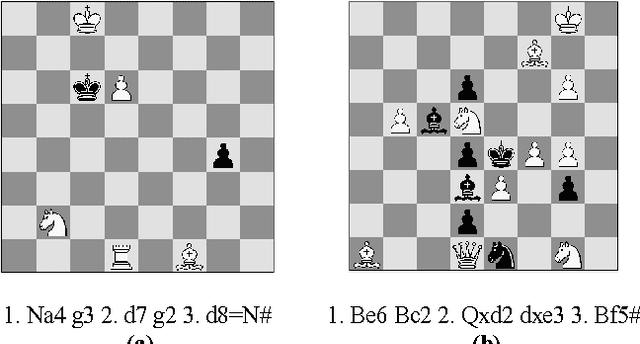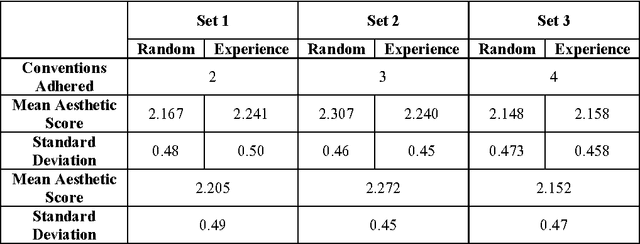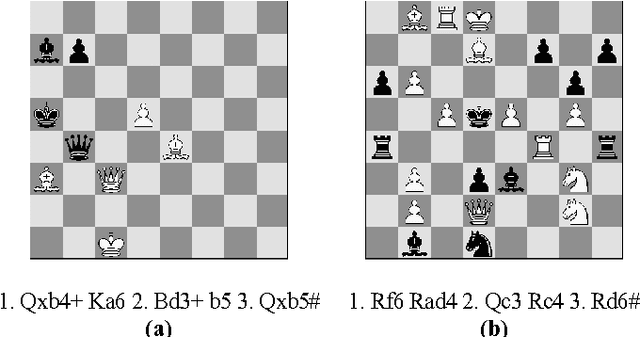How Relevant Are Chess Composition Conventions?
Paper and Code
Sep 21, 2016



Composition conventions are guidelines used by human composers in composing chess problems. They are particularly significant in composition tournaments. Examples include, not having any check in the first move of the solution and not dressing up the board with unnecessary pieces. Conventions are often associated or even directly conflated with the overall aesthetics or beauty of a composition. Using an existing experimentally-validated computational aesthetics model for three-move mate problems, we analyzed sets of computer-generated compositions adhering to at least 2, 3 and 4 comparable conventions to test if simply conforming to more conventions had a positive effect on their aesthetics, as is generally believed by human composers. We found slight but statistically significant evidence that it does, but only to a point. We also analyzed human judge scores of 145 three-move mate problems composed by humans to see if they had any positive correlation with the computational aesthetic scores of those problems. We found that they did not. These seemingly conflicting findings suggest two main things. First, the right amount of adherence to composition conventions in a composition has a positive effect on its perceived aesthetics. Second, human judges either do not look at the same conventions related to aesthetics in the model used or emphasize others that have less to do with beauty as perceived by the majority of players, even though they may mistakenly consider their judgements beautiful in the traditional, non-esoteric sense. Human judges may also be relying significantly on personal tastes as we found no correlation between their individual scores either.
 Add to Chrome
Add to Chrome Add to Firefox
Add to Firefox Add to Edge
Add to Edge